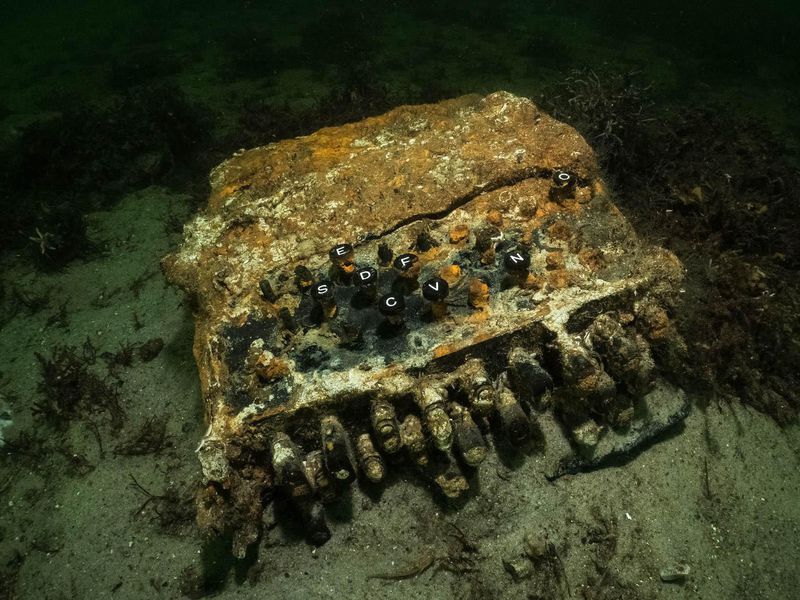Rare Nazi WWII Enigma Machine Discovered In The Baltic Sea
Language
Reading Level
Listen to Article

In late November 2020, German divers, commissioned by the World Wildlife Foundation to extract abandoned fishing nets from the Baltic seafloor, stumbled upon what appeared to be a pristinely-preserved ancient typewriter. However, a closer look at the rusted, algae-covered contraption revealed that the artifact was far from a typewriter. It was a rare Enigma machine, used by German armed forces to send messages securely during the Second World War.
“I’ve made many exciting and strange discoveries in the past 20 years. But I never dreamed that we would one day find one of the legendary Enigma machines," team leader and underwater archeologist Florian Huber told Reuters.
The encryption device was the brainchild of Dutch resident Hugo Koch, who invented it in 1919 for business purposes. However, at the start of WWII, the German armed forces modified the machine to send and receive coded military messages. Users did not need any special training to use the ingenious contraption. Their communication, written in plain text, was instantly substituted with new letters by the device's rotors. The recipient could easily decode the message using an Enigma device and the precise starting positions of the sender's rotors.
The German army believed their coding system, which was changed daily, was foolproof — and for a while, that appeared to be the case. Fortunately, in 1940, a team led by British mathematician and computer scientist Alan Turing gained access to a few Nazi codebooks. This, along with weaknesses discovered in the Enigma code implementation, helped the researchers build the "Bombe machine," which could crack even the most challenging codes. Historians believe the breakthrough, which allowed the Allied Forces to secure control over the Atlantic Ocean, shortened the war by several years and saved hundreds of thousands — if not millions — of lives.

The artifact recovered by the German divers features three rotors, leading Dr. Jann Witt, a historian from the German Naval Association, to suspect it was thrown overboard from a German warship and not an Unterseeboot ("undersea boat") submarine. The expert told the DPA News Agency that the so-called U-boats, which sank almost 3,000 Allied ships, used the more sophisticated four-rotor Enigma device.
Regardless, WWII Enigma machines are a rare find and highly coveted among private collectors. However, Huber and his team have no intention of profiting from their discovery. The artifact has been donated to an archaeology museum in Germany’s Schleswig-Holstein region and will be placed on public display once restored to its full glory — a process that could take about a year.
Resources: Smithsonianmag.com, Guardian.com, www.wwf.de

Get the Workbook for this article!
Workbook contains: Article, Reading Comprehension, Critical Thinking Questions, Vocabulary in Context (+ answers), Multiple Choice Quiz (+ answers), Parts of Speech Quiz (+ answers), Vocabulary Game (+ answers)Cite Article
Learn Keywords in this Article
317 Comments
- dnssoupqueenover 3 yearsI need to get me one of these things
- shremeryover 3 yearsits cool
- hesimyjipuboover 3 yearsThats amazing
- jazmine2008over 3 yearswow that's amazingly cool.
- edd100almost 4 yearscool
- black_and_whitealmost 4 yearssooooooooooo cool
- brandonthatkidalmost 4 yearsworld war 2 was scary i watched cherry it was based on it kinda
- pyfocowy-161568827308almost 4 yearswow i can not believe it that is so cool
- evilqueen11almost 4 yearsThey are lucky!
- evilqueen11almost 4 yearsWOW just when i thought history couldn't go any further back😀



